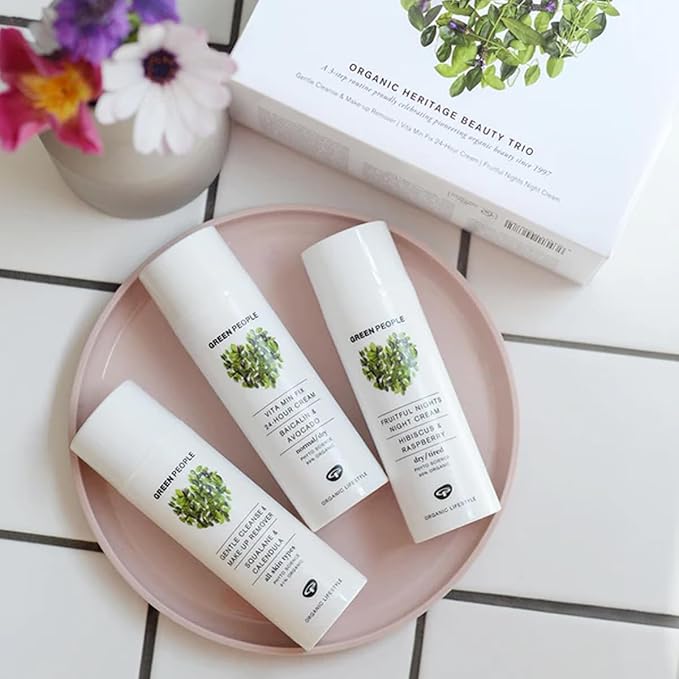At Friendly Turtle’s EcoBlog, we share how to celebrate graduations in style while reducing waste. From digital invitations and reusable décor to sustainable tableware and thoughtful plant-based menus, hosting an eco-friendly party has never been easier. Capture memories with digital photo albums, choose meaningful low-waste favours, and offer fun, minimal-impact activities like trivia or garden games. By planning with intention and creativity, you can honour the graduate and the planet. A memorable graduation doesn’t have to cost the earth just a bit of mindful preparation!
Share your articles with us and get published! Reach out at hello@friendlyturtle.com.
Vegan and Cruelty-Free Skincare Routine Essentials: Steps You Should Never Skip

Washing your face with a vegan and cruelty-free face wash and applying vegan and cruelty-free moisturizer is not only about the outside look but also comfort. For first-time vegan skincare users and those who are already hooked, some vital aspects and don'ts must be known to make your skincare journey the best one. That is why it’s time to explore a detailed and informative post about vegan and cruelty-free skincare.
Understanding Vegan and Cruelty-Free Skincare
To get an understanding of how the described routine is implemented, let us first discuss its two basic constituents: vegan and cruelty-free skincare. Policies associated with vegan skincare do not allow the incorporation of any item of animal origin or animal-related product like beeswax, lanolin, animal collagen, etc. On the other hand, cruelty-free products cannot be tested on animals at any point and the products bear the standard ethical test.

Essential Steps for a Vegan and Cruelty-Free Skincare Routine
Step 1: Cleansing
Cleansing is the foundation of any skin care regimen and helps to eliminate the buildup of dead skin cells, pollutants, dust, and oil throughout the day or night. Choose a mild vegan cleanser that does not contain harsh chemicals and/or artificial fragrances; it may contain plant extracts or essential oils. You can check out the amazing Beauty of Joseon for wonderful, natural ingredients and vegan products. It is recommended to gently massage on the damp skin with circular movements and wash it off with warm water.
Step 2: Cleansing (two or three times per week at most)
It leads to the shading of the stratum corneum, the removal of dead skin cells through cell renewal, and the complexion enhancement. Vegan options can be chosen instead of gel-like scrubs and it is better to use natural products such as fruit enzymes, natural jojoba beads, or ground seed grains. Do not use physical scrubs that can inflict micro-injuries on the skin.
Step 3: Toning
Toning works to restore the skin's pH following cleansing and makes it a parable for other subsequent products. Select a container that doesn’t contain alcohol or artificial fragrance. A gentle treatment is also possible with the help of such ingredients as witch hazel, rosewater, or aloe vera for the skin tightening pores and refreshing.
Step 4: Treatment (Serums or Essences)
Serums and essences are supercharged products that represent dense remedies for skincare problems and include the client's age, dryness, or darkening of the skin. When in the stores, find vegan creams with active ingredients such as hyaluronic acid, vitamin C, or peptides. Rub a pea-sized amount on the face and massage it lightly into the skin till it is fully absorbed. For a cruelty-free glow, try the WOWMD Glow Fusion Vitamin C Serum. It delivers brighter skin, fewer fine lines, and even tone—all in a vegan, paraben-free formula.
Step 5: Moisturizing
Subsequently, the skin requires the direct intake of fluids to be properly hydrated. Choose a vegan moisturizer for the skin type you have; normal skin, dry skin, oily skin, or sensitive skin. Moisturizers such as shea butter, coconut oil, and botanic oils do not block the pores of the skin. Spread the lotion on your face and your neck, especially in the areas that tend to get dry. Ceramides, glycerin, and shea butter are patents in rich moisturizers that help to hydrate the skin. To cater to those with oily or acne-type skin, consider going for those that are oil-free or gel-based moisturizers.
Step 6: Eye Cream
Eyes have very sensitive skin around them and they necessitate special care and attention. Go for an eye cream specifically designed for vegan consumers that contains elements such as caffeine, cucumber, or vitamin E to help reduce swelling, discoloration, and fine lines. Use your finger to apply a small quantity and spread it on the skin around the eyes, being as light as possible.
Step 7: Sunscreen (Daytime)
Protection from the Sun is needed for the skin only year-round because the early signs of aging and skin damage appear on the exposed skin. True is a non-nano zinc - or titanium-based, cruelty-free, non-toxic, organic/ natural broad-spectrum sunscreen of 30+ SPF. Sunblock lotions with mineral components such as zinc oxide or titanium oxide do not contain any toxic elements but are protective. Use generously on the face and other naked parts of the skin, both in the morning and at night.
Of course, your skincare routine does not necessarily have to consist of as many steps, but applying each of the listed products properly can prove vital. A rule of thumb is to layer from sheer to enriching but this must be relevant to the skin type that you have.
Additional Tips for a Successful Vegan Skincare Routine
Read Labels Carefully
To be sure that products are ‘truly’ vegan and free from animal testing, one should look for certification marks like Vegan Society, PETA, Leaping Bunny, etc.
Patch Test New Products
If there is a new product on the market that you want to introduce into your skincare routine, especially if you have sensitive skin, try the product for the first time on a small area of the skin before creating a new skincare routine.
Stay Consistent
The care of the skin is not an instant process that produces quick results. When choosing a routine, make sure to continue with it for at least a few weeks to notice changes in skin quality, elasticity, and general state. Sometimes, people begin their routine every day and are constant at first, but as time passes, they lose consistency. Don’t be one of them if you want to succeed.
Adjust According to Seasons
The skin has some special needs that it requires, especially during particular seasons. It is recommended that heavier products be applied in the summer and more emollient products in winter.
Hydrate and Eat Well
There are also internal measures for the skin and other skin-related issues through drinking clean water. Also include some tea and a balanced diet involving fluids, vegetables, and foods containing omega-3 fatty acids. The diet is even more important than the skincare routine.
Eco-friendly free from animal-test skincare products are not only good for the skin but also have a bigger significance of being ethical. By adhering to the foregoing guidelines for skincare and purchasing products judiciously, you can care for your skin and incorporate sustainable practices into the beauty product industry. Again, it’s extremely personalized - try different products and different regimens to see what is best for you. When you take care and devote time to it, you shall get the skin that will portray your beauty and care.
0 comments
Let customers speak for us
Blog posts
At Friendly Turtle’s EcoBlog, we explore how designing your outdoor space can create both beauty and environmental harmony. Whether it’s choosing reclaimed wood, planting native species, conserving water, or inviting wildlife, every decision shapes a garden that supports nature rather than working against it. Embrace seasonal changes, let go of perfection, and discover the quiet joy of a living, breathing habitat. From using eco-friendly materials to creating shade and natural cooling, even small gardens can reflect sustainability and purpose. Design not just for appearance but for a deeper connection with the world around you.
At Friendly Turtle’s EcoBlog, we highlight simple, effective ways to save water at home and protect our planet. From turning off taps and fixing leaks to taking shorter showers and using water-saving devices, small changes can make a big difference. Collecting rainwater, watering plants during cooler hours, and running full loads in dishwashers and washing machines all help reduce water waste. By adopting these habits and spreading the word, families can lower their environmental impact, save money, and ensure clean water for future generations. Every drop truly counts.



